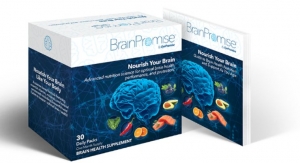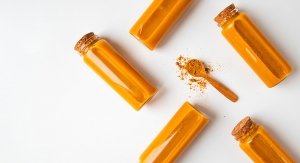Joanna Cosgrove04.18.11
Belonging to the phytoalexin class of compounds, pterostilbene is a protective compound produced by small berry plants like blueberries, cranberries, lingonberries and grapes to ward off the damage of pathogens such as bacteria or fungi. While such a complex biological process might be easy to overlook in such tiny berries,pterostilbene has been garnering quite a buzz in supplement circles where researchers are comparing its capabilities to those of resveratrol but with some decidedly interesting advantages in the realms of anti-aging, heart health, oxidative stress and memory support.
Pterostilbene and resveratrol both have the same role in the plant’s defense system. “Resveratrol is one of the main phytoalexins in grapes, pterostilbene in blueberries,” explained Jeremy Bartos, PhD, pTeroPure product manager for ChromaDex of Irvine, CA. “The only difference between the two is the presence of two methoxy groups in pterostilbene (resveratrol has three hydroxyl groups, pterostilbene has one along with the two methoxys).
It’s the methoxy groups that make all of the difference when it comes to utilizing these compounds in the human body. “Resveratrol has two things going against it,” said Dr. Bartos. “One is the fact that without the methoxy groups it is not as lipophilic (oil-soluble) as pterostilbene, so it’s cellular uptake is much less than pterostilbene - pterostilbene can be taken through the cell’s lipid bi-layer rather easily.”
The second difference has to do with how pterostilbene is filtered through the human liver. “The liver acts as the gatekeeper to the body; it filters everything that comes through and compounds it does not recognize (such as pharmaceuticals, plant chemicals and toxins) it will tag for elimination from the body,” said Dr. Bartos. “In the case with stilbenes such as resveratrol and pterostilbene the liver will typically glucuronidate (add a glucuronic acid molecule, a compound very similar to glucose) or sulfate any free hydroxyl groups it can find. Since resveratrol has three hydroxyl groups it is tagged for elimination much quicker and easier than pterostilbene with only one hydroxyl group, leading to a half-life in the blood of ~14 minutes compared to ~105 minutes for pterostilbene.”
To underscore his comment, Dr. Bartos pointed to a recently published paper which confirmed the bioavailability of pterostilbene as being “three to four times greater than that of resveratrol,” and noted that “systemic exposure to pterostilbene was substantially greater than was systemic exposure to resveratrol.” (Cancer Chemotherapy & Pharmacology, 2010 Nov 30)
Canon of Research
Pterostilbene has been a part of the supplement research vernacular since the early 1990s but only became more well-known inthe mid 2000s.Much of the current pterostilbene research being conducted today mirrors the studies that made resveratrol a household word, Dr. Bartos explained.
A study published by the USDA in 2005 compared both pterostilbene and resveratrol to determine their ability to induce PPAR-alpha activation, which is involved in fatty acid and lipid catabolism and its activation leads to decreased triglyceride and very low density lipoprotein (VLDL) synthesis. “It was shown in the study that pterostilbene activated PPAR-alpha in vitro better than all compounds tested, including both resveratrol and the pharmaceutical ciprofibrate,” said Dr. Bartos. “Subsequent structural and in vivo studies confirmed the correlation between pterostilbene’s activation of PPAR-alpha and cholesterol lowering. In fact, the first human clinical trial on pterostilbene currently underway at the University of Mississippi has cholesterol as its primary endpoint.”
A second study compared the ability of resveratrol and pterostilbene to protect cells against oxidative stress. “A collaboration of scientists from Tufts University and the USDA measured the ability of several plant polyphenols to protect cells from damage caused by oxidative stress and found that while pterostilbene was able to protect the cells, resveratrol was not. This is important for several reasons,” Dr. Bartos recalled. “First of all, the buzz around the industry is ‘anti-oxidant’ and ‘ORAC,’ (Oxygen Radical Absorbance Capacity), a quick and dirty way to measure the potential ability of a compound to neutralize free radicals before they cause oxidative damage.”
The problem with ORAC is that it only measures potential of a compound, not the actual ability, he said. “High ORAC compounds may have all the potential in the world, but if they can’t get to where they need to be in order to do the job they are supposed to be doing (in this case neutralizing free radicals) then the potential is never realized. So it is important to note that scientists went even further to show that pterostilbene’s ability to protect cells from oxidative damage can be seen in animal models as well as cell models.
“This is important because it shows that pterostilbene has the ability to localize in the places where it can be used,” he continued. “Oxidative damage seems to be at least partially responsible for aging disease such as Alzheimer’s. The scientists showed a direct correlation between the levels of pterostilbene in rat’s hippocampus (memory center of the brain) and their ability to remember how to run a maze, showing that pterostilbene’s protection against oxidative stress can be translated to behavioral changes as well.”
The most noteworthy up and coming pterostilbene studies will focus on sirtuin activation. “One of the latest papers is entitled ‘Pterostilbene Is More Potent than Resveratrol in Preventing Azoxymethane (AOM)-Induced Colon Tumorigenesis via Activation of the NF-E2-Related Factor 2 (Nrf2)-Mediated Antioxidant Signaling Pathway,’ [which] directly compares the abilities of pterostilbene and resveratrol to inhibit the formation of colon tumors in mice based on their anti-oxidant abilities alone,” said Dr. Bartos. “They found that while both pterostilbene and resveratrol were able to inhibit tumor formation by enhancing expression of antioxidant enzymes via activation of the Nrf2 protein, pterostilbene was significantly more potent than resveratrol.”
Market Potential
Because pterostilbene is still in its relative infancy, its market size and potential is somewhat difficult to calculate. Dr. Bartos said the first pterostilbene products were rolled out directly to physicians. Niche mail and Internet order markets are the next distribution phase, with retail venues as phase three. ChromaDex’s pTeroPure brand pterostilbene enjoyed a retail debut earlier this year and has steadily gained traction with larger retail companies—a phenomenon that should be bolstered over the next few weeks when the ingredient attains self-affirmed Generally Recognized As Safe (GRAS) status.
“With this hurdle behind, pTeroPure is no longer limited to the nutraceutical market and can be included in functional foods such as granola bars, cereal, yogurt, etc.,” said Dr. Bartos. “Imagine a cheese product that contains an ingredient that can improve your heart health, or a cookie that contains a compound used for centuries to support blood sugar levels.”
Research has suggested that pterostilbene and resveratrol can also work synergistically to protect cells from damage caused by oxidative stress and, in fact, may be more effective together than if used separately. To that end, last month Nutraceutical International Corporation added a new resveratrol and pTeroPure pterostilbene combination product to its Solaray Guaranteed Potency line of products.
In addition to the supplement market, ChromaDex also has high expectations for success with pTeroPure in the cosmetics market. “Because pterostilbene is lipophilic (oil-soluble), not only is it compatible with oil-based creams, but it also has fantastic uptake in to the cells because it can easily get through the cell’s lipid bilayer,” Dr. Bartos said. “This allows the ability to absorb a powerful anti-oxidant right into the skin where it can work to limit damage associated with aging. Recent experiments with the bacteria that causes acne have also shown promise.”
Pterostilbene and resveratrol both have the same role in the plant’s defense system. “Resveratrol is one of the main phytoalexins in grapes, pterostilbene in blueberries,” explained Jeremy Bartos, PhD, pTeroPure product manager for ChromaDex of Irvine, CA. “The only difference between the two is the presence of two methoxy groups in pterostilbene (resveratrol has three hydroxyl groups, pterostilbene has one along with the two methoxys).
It’s the methoxy groups that make all of the difference when it comes to utilizing these compounds in the human body. “Resveratrol has two things going against it,” said Dr. Bartos. “One is the fact that without the methoxy groups it is not as lipophilic (oil-soluble) as pterostilbene, so it’s cellular uptake is much less than pterostilbene - pterostilbene can be taken through the cell’s lipid bi-layer rather easily.”
The second difference has to do with how pterostilbene is filtered through the human liver. “The liver acts as the gatekeeper to the body; it filters everything that comes through and compounds it does not recognize (such as pharmaceuticals, plant chemicals and toxins) it will tag for elimination from the body,” said Dr. Bartos. “In the case with stilbenes such as resveratrol and pterostilbene the liver will typically glucuronidate (add a glucuronic acid molecule, a compound very similar to glucose) or sulfate any free hydroxyl groups it can find. Since resveratrol has three hydroxyl groups it is tagged for elimination much quicker and easier than pterostilbene with only one hydroxyl group, leading to a half-life in the blood of ~14 minutes compared to ~105 minutes for pterostilbene.”
To underscore his comment, Dr. Bartos pointed to a recently published paper which confirmed the bioavailability of pterostilbene as being “three to four times greater than that of resveratrol,” and noted that “systemic exposure to pterostilbene was substantially greater than was systemic exposure to resveratrol.” (Cancer Chemotherapy & Pharmacology, 2010 Nov 30)
Canon of Research
Pterostilbene has been a part of the supplement research vernacular since the early 1990s but only became more well-known inthe mid 2000s.Much of the current pterostilbene research being conducted today mirrors the studies that made resveratrol a household word, Dr. Bartos explained.
A study published by the USDA in 2005 compared both pterostilbene and resveratrol to determine their ability to induce PPAR-alpha activation, which is involved in fatty acid and lipid catabolism and its activation leads to decreased triglyceride and very low density lipoprotein (VLDL) synthesis. “It was shown in the study that pterostilbene activated PPAR-alpha in vitro better than all compounds tested, including both resveratrol and the pharmaceutical ciprofibrate,” said Dr. Bartos. “Subsequent structural and in vivo studies confirmed the correlation between pterostilbene’s activation of PPAR-alpha and cholesterol lowering. In fact, the first human clinical trial on pterostilbene currently underway at the University of Mississippi has cholesterol as its primary endpoint.”
A second study compared the ability of resveratrol and pterostilbene to protect cells against oxidative stress. “A collaboration of scientists from Tufts University and the USDA measured the ability of several plant polyphenols to protect cells from damage caused by oxidative stress and found that while pterostilbene was able to protect the cells, resveratrol was not. This is important for several reasons,” Dr. Bartos recalled. “First of all, the buzz around the industry is ‘anti-oxidant’ and ‘ORAC,’ (Oxygen Radical Absorbance Capacity), a quick and dirty way to measure the potential ability of a compound to neutralize free radicals before they cause oxidative damage.”
The problem with ORAC is that it only measures potential of a compound, not the actual ability, he said. “High ORAC compounds may have all the potential in the world, but if they can’t get to where they need to be in order to do the job they are supposed to be doing (in this case neutralizing free radicals) then the potential is never realized. So it is important to note that scientists went even further to show that pterostilbene’s ability to protect cells from oxidative damage can be seen in animal models as well as cell models.
“This is important because it shows that pterostilbene has the ability to localize in the places where it can be used,” he continued. “Oxidative damage seems to be at least partially responsible for aging disease such as Alzheimer’s. The scientists showed a direct correlation between the levels of pterostilbene in rat’s hippocampus (memory center of the brain) and their ability to remember how to run a maze, showing that pterostilbene’s protection against oxidative stress can be translated to behavioral changes as well.”
The most noteworthy up and coming pterostilbene studies will focus on sirtuin activation. “One of the latest papers is entitled ‘Pterostilbene Is More Potent than Resveratrol in Preventing Azoxymethane (AOM)-Induced Colon Tumorigenesis via Activation of the NF-E2-Related Factor 2 (Nrf2)-Mediated Antioxidant Signaling Pathway,’ [which] directly compares the abilities of pterostilbene and resveratrol to inhibit the formation of colon tumors in mice based on their anti-oxidant abilities alone,” said Dr. Bartos. “They found that while both pterostilbene and resveratrol were able to inhibit tumor formation by enhancing expression of antioxidant enzymes via activation of the Nrf2 protein, pterostilbene was significantly more potent than resveratrol.”
Market Potential
Because pterostilbene is still in its relative infancy, its market size and potential is somewhat difficult to calculate. Dr. Bartos said the first pterostilbene products were rolled out directly to physicians. Niche mail and Internet order markets are the next distribution phase, with retail venues as phase three. ChromaDex’s pTeroPure brand pterostilbene enjoyed a retail debut earlier this year and has steadily gained traction with larger retail companies—a phenomenon that should be bolstered over the next few weeks when the ingredient attains self-affirmed Generally Recognized As Safe (GRAS) status.
“With this hurdle behind, pTeroPure is no longer limited to the nutraceutical market and can be included in functional foods such as granola bars, cereal, yogurt, etc.,” said Dr. Bartos. “Imagine a cheese product that contains an ingredient that can improve your heart health, or a cookie that contains a compound used for centuries to support blood sugar levels.”
Research has suggested that pterostilbene and resveratrol can also work synergistically to protect cells from damage caused by oxidative stress and, in fact, may be more effective together than if used separately. To that end, last month Nutraceutical International Corporation added a new resveratrol and pTeroPure pterostilbene combination product to its Solaray Guaranteed Potency line of products.
In addition to the supplement market, ChromaDex also has high expectations for success with pTeroPure in the cosmetics market. “Because pterostilbene is lipophilic (oil-soluble), not only is it compatible with oil-based creams, but it also has fantastic uptake in to the cells because it can easily get through the cell’s lipid bilayer,” Dr. Bartos said. “This allows the ability to absorb a powerful anti-oxidant right into the skin where it can work to limit damage associated with aging. Recent experiments with the bacteria that causes acne have also shown promise.”



























